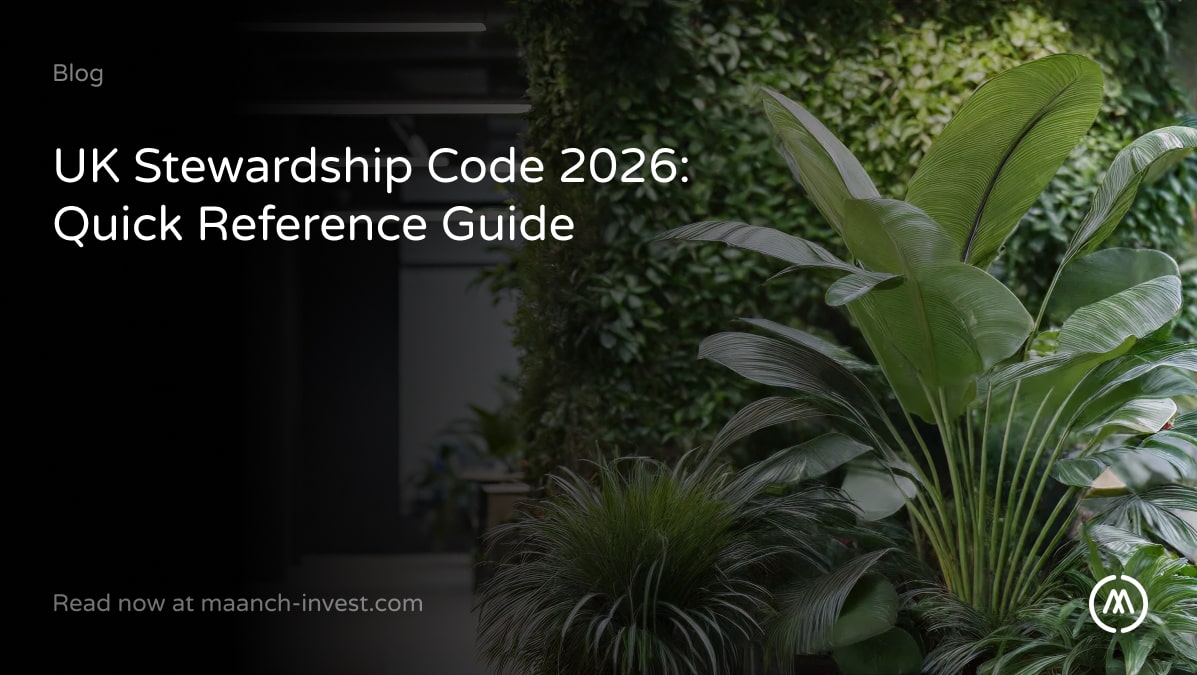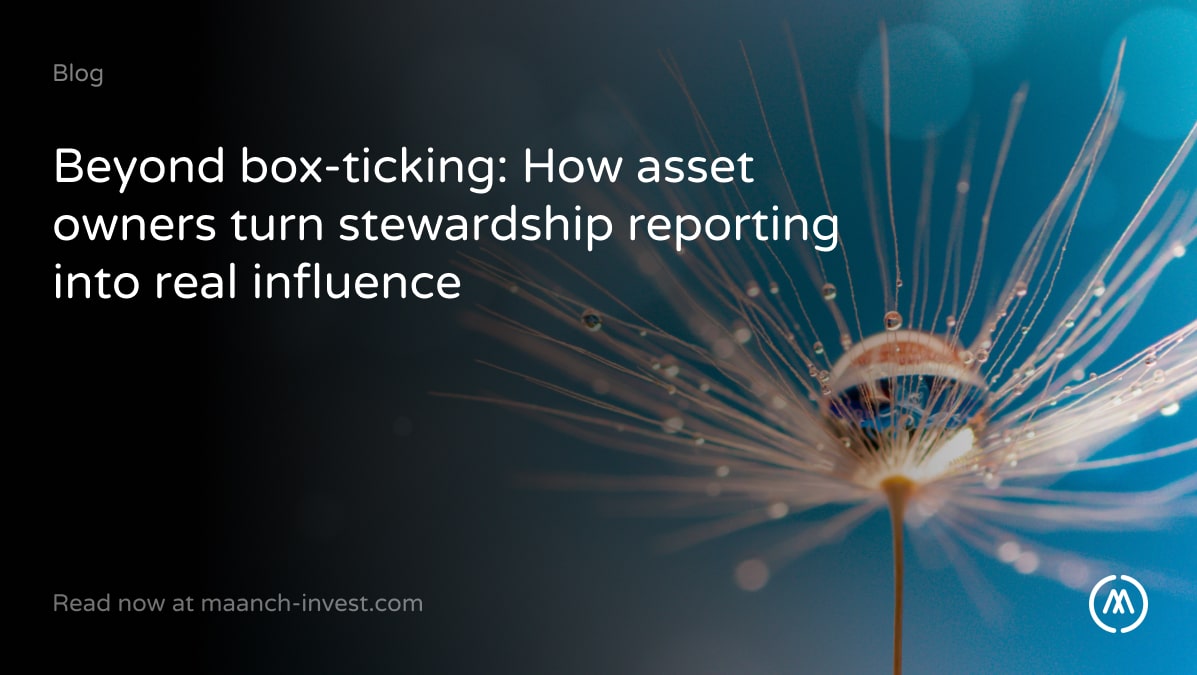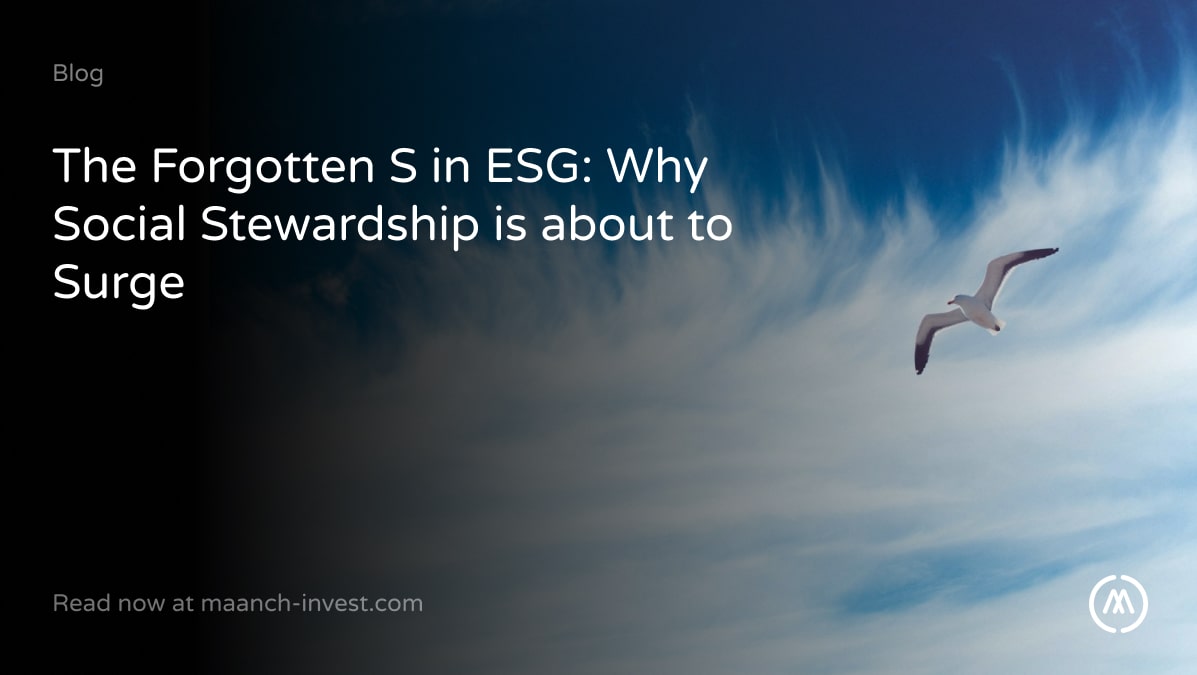A Conversation With Julie McDowell
Delve into the realm of responsible investing and the steps needed to create a sustainable and ethical economy. It was an immense pleasure to interview Julie McDowell, an independent consultant with over 20 years of experience in corporate governance and responsible investment, where she shared some highlights of her career and the evolution of responsible investment in a conversation with our Chief Impact Officer, Sianne Haldane.
1. Have you always worked in the field of responsible investing? Tell us about your career path and what attracted you to RI and ESG.
I have a diverse background from working in different fields. I started my career as a corporate lawyer with a law firm on Wall Street and went on to specialise in international trade work at the US Department of State. However, I was always interested in environmental, human rights and social justice issues, which were encouraged during my education at a Quaker school.
After moving to the UK in 1998, I began working in ethical investing at an investment firm in Glasgow. As a lawyer, I had witnessed cases where egregious corporate conduct had occurred and I was also attracted to the idea that investors have a responsibility to hold companies to account. Back then, ethical investing focused on excluding the so-called “sin stocks” from investment portfolios. Over time, responsible and sustainable investing has evolved to incorporate various strategies and concerns that exclusionary methods may negatively affect investment returns and be too simplistic.
2. How has responsible investing evolved over the years?
Instead of relying exclusively on excluding companies as a way of investing ethically or responsibly, investors started looking at the risk exposure of companies that did not address and manage key environmental, social and governance (ESG) challenges. They also argued that using their influence as shareholders to encourage better corporate practices could make a significant contribution to enhancing the upside potential and decreasing the downside risk of their investments.
There has been a massive shift from how responsible investment is viewed today compared to when I started in this field. For instance, when I visited a Swiss company back in 2001 and asked if they had an environmental policy I was told that they didn’t and that if I wanted to invest in a company that had an environmental policy I shouldn’t invest in theirs. This is not something you would hear in the present day. I also remember an FTSE 100 company that presented its CEO and executive team to talk to a roomful of investors about how they managed ESG issues. The entire panel was comprised of men. When I asked the CEO if he would be including women in their executive team presentation in the following year he turned to his team and said, “one of you guys will have to wear a skirt next year.” This sort of flippancy about diversity would be unthinkable today.
3. How would you explain ESG and responsible investments to someone who is not familiar with the industry?
The core premise of responsible investment is to align investment with environmental and social objectives. This can be achieved by investing in companies whose products or services help solve environmental and social problems. Also, investors may interact with company management to encourage higher standards of practice.
4. Do you see investing through an ESG lens as more of a risk or an opportunity?
It’s both. People will have different opinions on whether a company is risky or has good potential. As my father used to say, that’s what makes a horse race. One person may think that investing in a tobacco company is risky because of government regulations, health awareness and litigation risk while others will predict continuing demand for tobacco and be attracted to tobacco company dividends. Some people may also have moral objections to investing in a company that makes a product which can be harmful.
Thinking about environmental and social challenges can also be used as a filter to look at investment opportunities. For example, people live an ever-larger proportion of their lives with a disability and ill health. Society needs investment in products and services that support people to live independently with choice and dignity as they age. Companies that provide housing, care and innovative technology that improve the lives of our ageing population are exciting opportunities for investment.
5. Will the increase in responsible investing lead to real-world changes and how can we measure them? How does it compare to impact investing?
The increase in responsible investment has produced a significant increase in the measurement and disclosure by companies of their social and environmental impacts and their governance practices. That’s a good thing. It shines a light on corporate conduct that encourages accountability and investors can use this information in evaluating companies. The big question is whether the increase in measurement and disclosure leads to an overall improvement in real-world corporate practices. While I am an optimist I think history shows us that progress ebbs and flows!
6. How big do you see greenwashing as a problem and how to address it?
Greenwashing is a big concern for regulators, it has been a major issue in the investment industry, with some companies being caught in deceitful practices. Additionally, the vague or misleading language used in marketing and communications, such as the word “sustainability,” can contribute to confusion and a lack of understanding. It’s important for companies to clearly define their practices and goals as well as back these claims up with evidence.
7. Can you throw some light on emerging ESG engagement trends with respect to investors’ space? How do you see the role of engagement within responsible investment and ESG changing?
A recent report stated that high levels of investor engagement can cause frustration for CEOs and CFOs who don’t like being told what to do. Engagement can be tricky because it can mean different things like writing letters, following up, or having meetings. It is most effective when pushing for better disclosure and reporting or changes in operational management. However, it can be difficult to achieve and it is important to be clear about what kind of engagement is being pushed for. For example, it may be difficult to push a tobacco company to stop selling cigarettes, but it may be possible to push an oil and gas company for better disclosure on emissions. Fund managers should be clear about the type of engagement they are pursuing (e.g., reporting or change in operational activity) and the potential impact it will have in the real world.
8. Where do you see the standardisation of frameworks going?
It’s helpful to have standardisation of frameworks and reporting standards, but it can be confusing for companies to know which guidelines to follow. It is important for any guidelines to be developed in collaboration with the industry, rather than being imposed from outside without input from those directly involved. As an aside, the SDGs were originally created for governments. However, businesses and investment firms are now using them as standards. It will be interesting to see how this trend continues.
9. Do you have any final thoughts to share?
It’s very clear that this arena has grown exponentially, particularly over the last three to five years. It used to be that everybody you knew was training to be a yoga teacher and now everybody is an ESG consultant, which shows that it’s part of the zeitgeist! But the current popularity of responsible investment has resulted in a lot of people “jumping on the ESG bandwagon” and using responsible investment as a marketing tool. Those of us working in the field must be ready to demonstrate clearly what responsible investment means and how we are doing it.
Maanch Engagement Tracker – Simplifying Sustainability, Using Technology
In response to these complex and evolving challenges in responsible investing, we have developed the Maanch Engagement Tracker, a tool that allows you to easily and effectively capture every engagement with your portfolio companies. Uncover its wealth of benefits that can revolutionise the way you manage your portfolio engagements, here.



